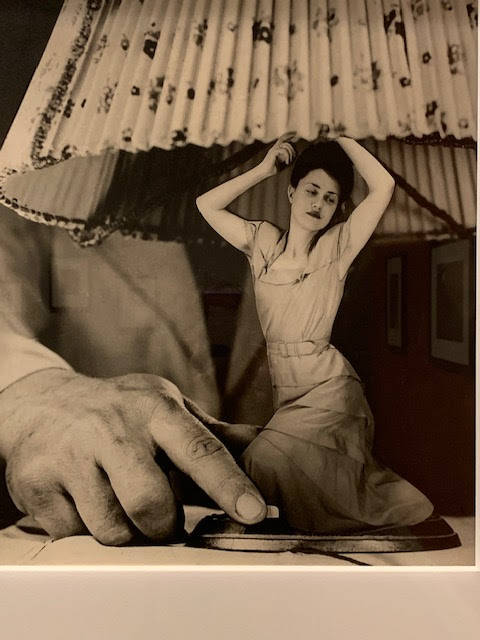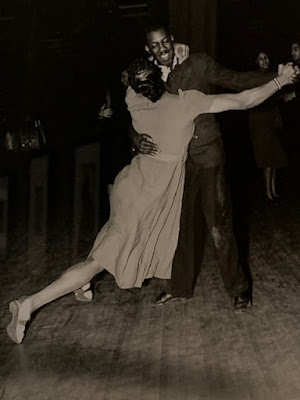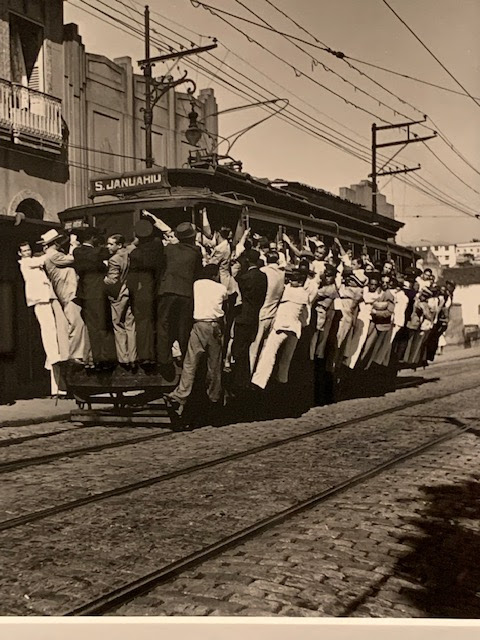Bright Star on stage now at the Little Theatre of Alexandria
There's a saying in Washington that if you really want to see a performance, better go ahead and get the tickets now and not spend too much time thinking about it or the show might sell out, which is what has happened with Bright Star at the Little Theatre of Alexandria.
It's a musical with a homespun twist, a local yarn, and a live nine-member bluegrass band.
And just what the doctor ordered to brighten a day and provide a few hours' escape from this cold and dastardly covid winter.
But what a couple of hours they are!
For a trip to North Carolina's hills and pretty skies of changing colors with twangy chords, come on along and see and hear them here and enjoy a storyline, too.
Maura Lacy is Alice Murphy and Joshua Nettinga is Jimmy Ray Dobbs in Little Theatre of Alexandria's Bright Star/Photo by Matt Liptak.
It's a night of make believe but based on a true story of a woman who falls in love, endures a tragedy of unspeakable horror, and grows up to be a dispirited editor. Nearby, a parallel life unfolds as a young man (Preston Grover as Billy) returns from military service in World War II and sets about on his own adult path, meeting a girl, finding work, romance, and more.
The star of the show is Maury Lacy as the versatile and glamourous Alice Murphy, a flirty young thing (weren't we all like that?) who transitions into a straitlaced, no-nonsense journal editor with little joy in life, until....
Joshua Nettinga is convincing as a true amour whose love never dies. Billy is the hometown boy done good, and I am always delighted to find Patricia Nicklin in a cast since she's compelling in whatever role she's got (here as Mama Murphy, Alice's mother).
My favs in this show though were Ashton Schaffer (Daryl) and
Audrey Baker (Lucy) who work for Ms. Murphy and counterbalance her strict ways at the office and elsewhere. Sure, the script had a lot to do with their funny portrayals, but Ms. Baker's exaggerated mannerisms, prancing and delivery always produced out loud laughs.
What a delightful twosome they were, and laughter I like!
Another acting favorite was Jamey Pellegrini, the swashbuckling demagogic mayor who elicited the audience's animosity as intended.
The play jumps back and forth from the 1920s to the 1940s but is not as disjointed and hard to follow as it may appear, however, some roles interrupt the show's flow, and I did question the large part of Margo (Audrey Landau Townsend). She is Billy's romance.
Costumers Jean Schlichting and Kit Sibley had their hands full, skillfully designing garments (especially the mayor's getup) for the two time periods for a cast of 27.
While none of the songs may be familiar, the uncommon tunes do not dilute enjoyment, with their magnificent harmonies, most with the ensemble, to carry a girl's heart away.
A little schmaltzy and overdramatic, maybe. A little predictable, yes, but still, quite entertaining and that's why we go, isn't it?
The wonderful accompaniment by the onstage band (behind high wooden fencing in Matt Liptak's folksy set) with guitar, mandolin, banjo, cello, fiddle, and more make joyful sounds.
The "Bright Star" in this show is the ensemble who dances and sings to music which was nominated for a Grammy.
Yes, Audience: There really is a Zebulon, North Carolina.
Will the show be extended? We DMVers do hope!
If you are Steve Martin (yes, THE Steve Martin) or Edie Brickell, the duo which created the story, book, and music, the LTA's box office manager, Jeffery Westlake, just might find seats for you since Mr. Martin and Ms. Brickell need to get to Alexandria pronto and see what this fabulous team has done with their creation.
It'll make them right proud, I must say.
Other cast members are Joseph Peacock, Drew Goins, Jasmine Jones, Caleigh Riordan Davis, Steven Palkovitz, Michael Gale, Rene “Kieth” Flores, Jeremy Venook, and Alicia Braxton.
The ensemble includes Anna Longenecker, Sally Ann Flores, Maya Focht, Eamonn Herbold, Carolina Sramek, Sophia Stine, Xander Stine, Maya Topalhan, Elena Wear, and Leah Wong.
Paige Rammelkamp, assisted by Justin DeLong and Lucia LaNave direct the music. Band members are Chuck Perryman, Patrick Costanzo, Clyde Bowie, Noah Dail, Jason Labrador, Tim Thulson, Sara Korpeck Farris, Stephen Kelsey, Emilie Mitchell, and Sedale McCall.
Other crew members are: Hilary Adams and Jamie Blake, producers; Rachel Alberts, assistant producer; Emily “EJ” Jonas, director, intimacy coordinator, and fight choreographer; Ramah Johnson, stage manager; Pauline Lamb, choreographer and dialect coach; Jim Hutzler, Jeff Nesmeyer, Stacey Becker, and Charles Dragonette, set construction, painting and design; Allison Gray-Mendes, technicals and properties; Jeffrey Scott Auerbach and Kimberly Crago, lighting, assisted by Cleo Potter; David Correia, sound; Karen Sagun and Robin Worthington, wardrobe; Larissa Norris, makeup; Chanel Lancaster, hair; and Russell M. Wyland, rigging.
What: Bright Star
When: Now through Feb. 5, 2022, Wednesdays through Saturdays, 8 p.m.
Where: The Little Theatre of Alexandria, 600 Wolfe Street, Alexandria, VA 22314.
Duration: About 2 hours with one 15-minute intermission.
Masks and vaccine cards or proof of a negative covid test within 72 hours of show time are required. No exceptions.
For more information: Box Office: 703-683-0496; Business: 703-683-5778. Email: boxoffice@thelittletheatre.com or Asklta@thelittletheatre.com
patricialesli@gmail.com










































